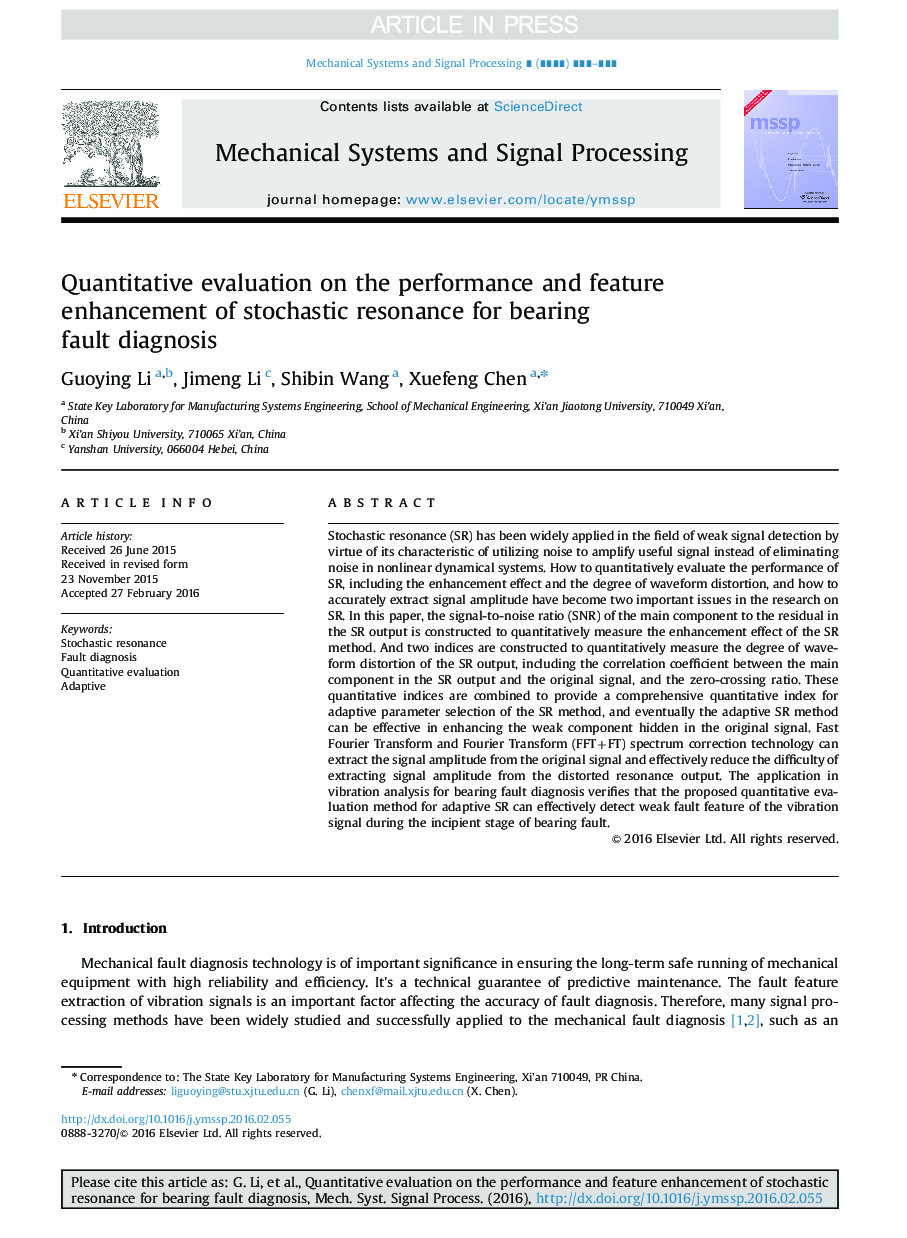| Article ID | Journal | Published Year | Pages | File Type |
|---|---|---|---|---|
| 6954908 | Mechanical Systems and Signal Processing | 2016 | 18 Pages |
Abstract
Stochastic resonance (SR) has been widely applied in the field of weak signal detection by virtue of its characteristic of utilizing noise to amplify useful signal instead of eliminating noise in nonlinear dynamical systems. How to quantitatively evaluate the performance of SR, including the enhancement effect and the degree of waveform distortion, and how to accurately extract signal amplitude have become two important issues in the research on SR. In this paper, the signal-to-noise ratio (SNR) of the main component to the residual in the SR output is constructed to quantitatively measure the enhancement effect of the SR method. And two indices are constructed to quantitatively measure the degree of waveform distortion of the SR output, including the correlation coefficient between the main component in the SR output and the original signal, and the zero-crossing ratio. These quantitative indices are combined to provide a comprehensive quantitative index for adaptive parameter selection of the SR method, and eventually the adaptive SR method can be effective in enhancing the weak component hidden in the original signal. Fast Fourier Transform and Fourier Transform (FFT+FT) spectrum correction technology can extract the signal amplitude from the original signal and effectively reduce the difficulty of extracting signal amplitude from the distorted resonance output. The application in vibration analysis for bearing fault diagnosis verifies that the proposed quantitative evaluation method for adaptive SR can effectively detect weak fault feature of the vibration signal during the incipient stage of bearing fault.
Related Topics
Physical Sciences and Engineering
Computer Science
Signal Processing
Authors
Guoying Li, Jimeng Li, Shibin Wang, Xuefeng Chen,
